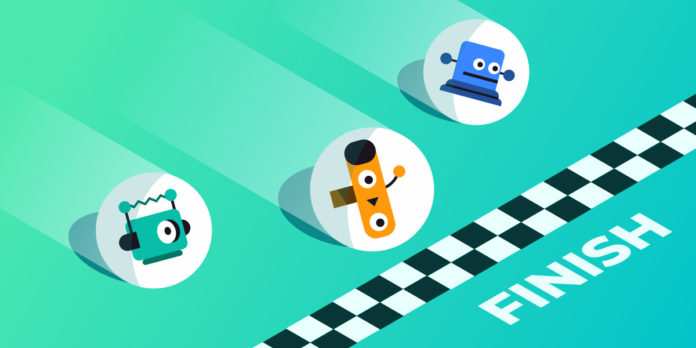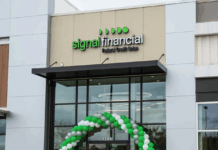How to Avoid the Severe Fate of Complacency – and Continuously Improve your Customer Experience
Bob Dylan’s protest anthem The Times They Are a Changing was a clarion call to action for the youth of the 60s that had profound effects on our culture and politics. It has been celebrated as one of the greatest songs ever written, and even helped earn Dylan a Nobel prize.
One line in the song has always stood out as somewhat cryptic: “The first one now will later be last.” Of course, new leaders often rise and replace the former frontrunners during times of change. But is there something more prophetic here? A powerful warning for modern businesses. Especially today, as companies face radically changing business landscapes. Is Dylan warning against complacency?
Complacency has long been a big challenge for business. Failure to innovate and keep pace with competitors has been the demise of many great businesses. Those that ignored that crazy computing fad, the overhyped Internet trend or that fleeting cloud craze, for example. In fact, today’s technology is only accelerating the innovation cycle, making complacency an even bigger threat.
In today’s consumer-driven world where the overall experience is a top differentiator, customer care organizations are now at the forefront of innovation. Those that embrace new technologies to enhance the customer experience often pull ahead exponentially, leaving those that stagnate to fall ever further behind. We are seeing automation, self-service and AI completely transform customer care and how customer-facing teams operate. This is forcing companies to reassess, rethink and often react to new technologies as they emerge.
Bots, in particular, are radically changing customer care with popular self-service options that decrease wait times and reserve live agents for more challenging issues that require a human touch. They represent an inflection point for the industry, creating new opportunities for companies that adopt them and critical challenges for those that do not. Bots have the potential to quickly propel smart new challengers to the front of the pack while driving leading companies to the back — potentially from first to last.
If It Ain’t Broke …
Some rather large and successful companies get caught flat footed. Nearly all have had to innovate to get where they are. So how do they lose sight and become complacent? In some cases, it’s a change in management or an unfortunate shift in priorities. But not recognizing a shift in technology quickly enough is what kills many solid companies. Ignoring the cloud, or currently for customer-focused teams, dismissing the shift to automation and AI-driven technologies can prove to be fatal.
Interestingly enough, many failed companies did invest in useful technologies, just not as an on-going, iterative process. According to research from renowned professor Vijay Govindarajan of Dartmouth’s Tuck School of Business, many companies are very reluctant to adopt newer solutions after making a significant investment in tech systems or equipment. Often the company wants to fully amortize its investment to get the best return. In today’s fast-paced environment, this is pennywise and pound foolish.
“If it ain’t broke, don’t fix it,” goes the old adage. Operative word here being old, and frankly, outdated. Technology is developed and released in iterative cycles today and needs to be assessed on an on-going basis. The race has picked up the pace and is only getting faster. Long gone are the days of implementing a solution and then waiting five to ten years, depending on the license cycle, to consider an upgrade or replacement. Today’s leaders optimize their technology on a monthly, weekly and even daily basis.
Tech Decisions are Not Just About Tech Anymore
Of course, just because an app, tool or widget is new doesn’t mean it’s the right fit for every company. The tricky part is in assessing new technologies and understanding when they can benefit a company – and also when to pass. It’s not as simple as merely adopting every new customer-experience technology as it is rolled out. First, that could be quite costly since the number of apps, tools and platforms are proliferating as the customer experience becomes a leading business priority. The key is in assessing the right technology among the pack.
Even more important is how a company deploys beneficial technologies. Bots are fundamentally changing how contact centers and customer care departments function. By managing most of the routine and repetitive calls, bots are allowing real-life human agents to focus on more difficult calls that require troubleshooting and some empathy. Live agents are becoming more strategic, and as a result so are their managers, coaches and nearly every position within the customer care team and beyond, up to executive management. This is causing a fundamental restructuring for contact centers and customer care departments.
Customer care teams that enact new processes to support shifting roles will gain advantage. That includes rethinking everything from how agents are managed to customer care metrics, training, coaching and even recruitment. Bots are not only providing smarter ways to work; they are rewiring the DNA of the company.
An Ambidextrous Approach to Mitigate the Risk of Change
Companies need to have a strategic plan for how to manage the change that bots and other technologies are catalyzing. An ambidextrous organization, for example, builds structurally distinct teams for both existing business and emerging new opportunities. While separate, both groups report into the same management team, which in turn has to continually look for even newer opportunities as they emerge.
While it sounds like a great deal of overhead, research shows this approach to be highly effective. In a study led by Harvard Business School’s esteemed professor Michael L. Tuschman and published in the Harvard Business Review, ambidextrous organizations succeed in breakthrough innovation 90% of the time compared to a success rate below 25% for companies that did not take this approach. And those are the type of odds business leaders are looking for to overcome complacency and avoid falling to the back of the pack.
The Leapfrog Effect
Despite the ever-quicker pace of tech development, there is a phenomenon that can help laggards catch up and even propel themselves to the front of the pack – the leapfrog effect. While you’d think that a company that is complacent would only fall further and further behind, disruptive new technologies can place them back in contention. But companies need to be open to new technologies and ready to act when a quantum leap opportunity presents itself.
For example: Starbucks embracing mobile app payment solutions helped them to bounce back from a string of profit losses and start gaining market share again. Or Zara embracing a new supply chain model to become one of the most agile retailers and quickest to respond to consumer trends. For customer care departments, bots are an opportunity to leapfrog over the competition and get back into the game. Or for a successful company, a way to maintain a lead and even outpace competitors.
But as we’ve noted above, to be successful companies will need to closely evaluate which bots offer the most benefit and develop a strategic plan on how to best leverage the technology and transform the organization. Increasingly, that means processes that support both human talent and bots, working and even training together. Further, companies will need to assess bot technologies and other break-through advances on an on-going basis to iteratively capitalize on tools that can create advantage. And perhaps build separate teams in an ambidextrous structure to effectively dial in new technologies.
Whether a company is at the head of the pack or has fallen behind, complacency is a threat in today’s fast-paced, digital world – especially for customer care. As the customer experience increasingly becomes a main business driver, companies that continuously work to improve how they engage customers will gain the advantage. Conversely, those that ignore, wait or even hesitate to leverage valuable new solutions will find themselves falling precipitously behind.
It’s a fast-paced business environment, so celebrate big wins, briefly, but don’t stop seeking new ways to improve the customer experience. Take your eye off the ball too long and you just might discover exactly what Bob Dylan meant in his line ‘the first one now will later be last.’
As the present now will later be past
The order is rapidly fadin’.
And the first one now will later be last
For the times they a
The order is rapidly fadin’.
And the first one now will later be last
For the times they are a-changin’.
Check out the previous installment of this series: “Organizing the Contact Center to Drive the Digital Experience for Customer-Centricity | The Times They Are a-Changing: Talent in the Contact Center Part 8”





